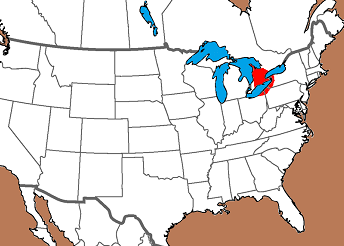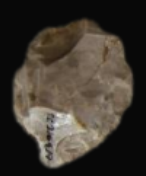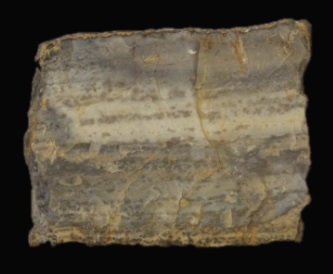Kettle Point Chert
AKA: Ausable Chert, Port Franks Chert / Chalcedony
Description of Physical Characteristics:
Color: Kettle
Point Chert has an exterior color that ranges from a mottled blue gray
to a medium gray with darker grayish banding.
May have a brassy or greenish hue.
Lighter clouds or streaks are present.
Texture: Smooth fine grain
Luster: Waxy to dull
Silica Fabrics / Fossils: Macro fossils
include conodont hash and echinoderm fragments, radiolaria sponge
spicules, ernaceous, foraminifera. Micro fossils
include acritarch, chitinozon, and scolecedont.
Patina: Pale red to grayish brown
Heat Treatment: Heat treatment produces
colors of pink and mauve.
Knapping:
Distribution:
Distribution Comments:
Kettle Point Chert is associated with the
Ipperwash Formation Limestone and found just below the Kettle Point
Formation Black Shale. Primary sources extend from the tip of Cape
Ipperwash north to Kettle point at Lake Huron. Exposed beds have
been located at roadway cuts in Thedford, Ontario. Secondary
sources have been reported in Ausable Basin and Essex County, Ontario.
(into Pennsylvania)

Projectile point made from this material:

Pictures Provided By:
References: (See Reference Page, Entry Number):
Similar Material:
Archaeological Context:



